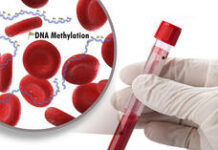In a monoinstitutional study, the investigators evaluated clinical outcomes in patients with oestrogen receptor (ER)-low positive, HER2-negative, stage I-III breast cancer as compared to patients with triple-negative breast cancer (TNBC) undergoing (neo)adjuvant chemotherapy. ER-low status was defined as 1–9% of tumour cells positively stained for ER by immunohistochemistry, while patients with tumours categorised as ER-negative had ER <1%. In this study, primary breast cancer with ER-low positive status had similar clinical behaviour to those with ER <1%. Dr. Valentina Guarneri of the Division of Oncology 2, Istituto Oncologico Veneto IRCCS in Padova, Italy and colleagues wrote on 2 August 2021 in the npj Breast Cancer that their results add to evidence for the use of a 10% cut-off, rather than <1%, to define TNBC.
The authors wrote in the study background that although most breast cancers show either complete absence of ER staining (0%) or ER positivity in ≥10% of tumour cells, a small subgroup of breast cancers presents low levels of ER expression, defined by 1–9% of ER positively stained cells.
It has been reported that ER-low positive tumours present biological features similar to ER-negative tumours and are mostly classified as basal-like or HER2-enriched by PAM50 intrinsic subtyping. There are also some reports that breast cancers with ER-low levels might present a clinical behaviour more similar to ER-negative than to ER-positive breast cancers, both in terms of response to neoadjuvant chemotherapy and prognosis. These data suggest that the use of a threshold of 1% stained breast cancer cells to define ER-positive status might not accurately reflect the underlying biological nature and clinical behaviour.
It prompted the study investigators to evaluate clinical outcomes according to ER levels in a retrospective cohort of patients with stage I-III TNBC undergoing (neo)adjuvant chemotherapy. They collected clinicopathological data of 406 patients with ER <10%, HER2-negative breast cancer treated with (neo)adjuvant chemotherapy in their institution. There were 364 patients categorised in ER-negative subgroup defined as ER <1% and 42 patients with ER-low positive status. At a median follow-up of 54 months, 88 patients had relapsed and 64 died.
No significant difference was observed in terms of invasive relapse-free survival (iRFS) and overall survival (OS) according to ER expression levels, both at univariate and multivariate analysis. The 5-years iRFS was 74.0% in patients with ER-negative versus 73.1% in patients with ER-low positive breast cancer (p = 0.6), while 5-years OS was 82.3% in patients with ER-negative versus 76.7% in patients with ER-low positive breast cancer (p = 0.8).
Among the 165 patients who received neoadjuvant chemotherapy, pathological complete response rate was similar, 38% in patients with ER-negative and 44% in patients with ER-low positive breast cancer (p = 0.498).
The authors commented that in their study, patients with ER-low positive breast cancer presented clinicopathological characteristics at least as aggressive as those reported for ER-negative breast cancer. Both subgroups presented high Ki67 levels, high histological grade, and relatively young age at diagnosis and both presented with locally advanced stage at diagnosis; those with ER-low positive breast cancer presented an even higher frequency of locally advanced stage at diagnosis as compared to ER-negative tumours, although this difference has no clear biological explanation and might be due to the small size of the ER-low positive subgroup.
All patients included in the study were treated with neoadjuvant or adjuvant chemotherapy and no difference in the type of chemotherapy regimens was reported. This highlights the fact that ER-low positive tumours are usually treated in clinical practice similarly to ER-negative breast cancer.
Only a small number of patients received endocrine therapy, including a limited number of patients with ER-negative breast cancer who received endocrine treatment due to a previous or synchronous second ER-positive breast cancer or ER-positive residual disease after neoadjuvant chemotherapy. In the ER-low positive subgroup, only 6 patients received adjuvant endocrine therapy. The authors commented that this can be partially explained by the fact that a significant number of patients were treated before the publication of ASCO/CAP 2010 guidelines that lowered the ER cut-off from 10% to 1%. Furthermore, in clinical practice, the use of adjuvant endocrine treatment for ER-low positive breast cancer is still debated.
Overall, early ER-low positive breast cancer is a rare subtype that shows similar clinical behaviour and similar response to neoadjuvant chemotherapy to TNBC. The authors concluded that taken together, their findings add to the existing evidence suggesting the use of a 10% cut-off to define ER-positivity in breast cancer.
The study was funded by Istituto Oncologico Veneto and the University of Padova – Department of Surgery, Oncology and Gastroenterology.
Reference
Dieci MV, Griguolo G, Bottosso M, et al. Impact of estrogen receptor levels on outcome in non-metastatic triple negative breast cancer patients treated with neoadjuvant/adjuvant chemotherapy. npj Breast Cancer 7, 101 (2021). DOI: https://doi.org/10.1038/s41523-021-00308-7






